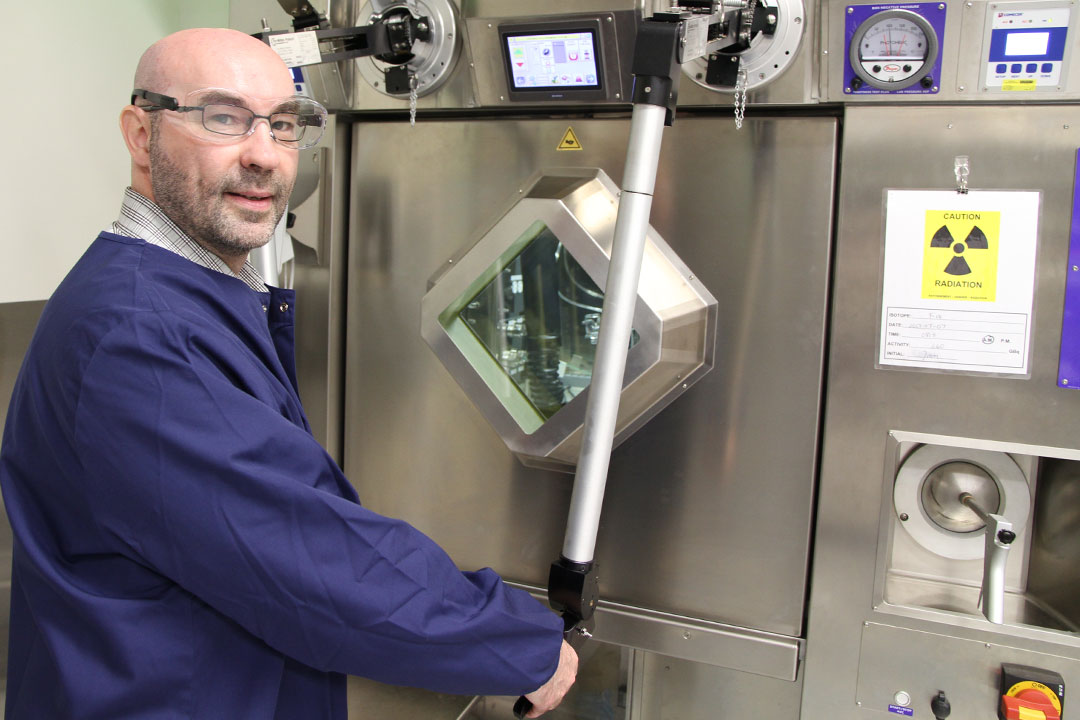
Cyclotron helps reduce wait times for patients
A year ago, Royal University Hospital (RUH) patients scheduled for medical scans to detect cancer cells sometimes waited as long as seven weeks.
By HenryTye GlazebrookToday, with radioisotopes being produced locally at the Saskatchewan Centre for Cyclotron Sciences at the U of S since June of last year, wait times on average have been reduced to as little as one week. Saskatchewan Premier Brad Wall made the announcement during a visit to the facility on July 10.
For some, that reduction in wait time can remove an unbearable stress from their shoulders much earlier than would otherwise be possible. For others, it can mean a welcome boost in a dire fight for survival.
“The sooner you can find out about cancer the better you can treat it and the better chance you have to save the patient’s life,” said Ghislain Boudreault, facility manager for the Saskatchewan Centre for Cyclotron Sciences. “That’s what makes the whole thing relevant. Cancer is always a matter of time. If you detect it too late, the patient will die. But if you can detect it very, very early, now you have a more hopeful chance to save the patient’s life.
The Saskatchewan Centre for Cyclotron Sciences, operated by the Sylvia Fedoruk Canadian Centre for Nuclear Innovation, has been the primary producer of radiopharmaceuticals to RUH since June of last year, drastically reducing the distance between use and production compared to their previous out-of-province supplier of radioisotopes. Given the shelf life of radiopharmaceuticals, said Boudreault, that difference can be critical.
“Radiopharmaceuticals are radioactive compounds, so they decay over time,” he said. “You cannot produce them, store them and then use them in two weeks. If you need it today, you’re producing it today, because by the end of the day there’s nothing left.”
The radiopharmaceuticals make very early cancer detection possible due to its chemical buildup, the sugary foundation of which is drawn in by the high metabolic rate of cancer cells. The process creates a bright spot of radiation on reconstructed images as the radioactive sugar compound taken up by the tumor cells, which can easily be seen on medical scans.
“It’s all about metabolism,” Boudreault said, adding that the technique can be similarly used— albeit with different radiopharmaceuticals—to study brain activity and diseases such as Alzheimer’s and Parkinson’s. “You don’t need to wait until the tumour is big to detect it. As soon as it starts growing and the metabolism has changed, you can detect it.”
Boudreault is happy the facility has been able to help bring wait times down for patients. He is also proud of their other accomplishments, including passing inspections, obtaining licensing, marketing, and recently bringing on Calgary Foothills Medical Centre as another client for back-up supply of radiopharmaceuticals.
“It is an excellent sign that we are doing really, really well,” he said. “We have a great team and a great facility, and we can get the best out of it. I can tell all the researchers and fundraisers are confident that we can do more.”
